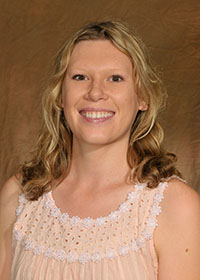Getting a job after college is just a mundane next step in life for many.
 For Mariya Zhuravleva, assistant professor in the Department of Materials Science and Engineering, it was a bit more exciting.
For Mariya Zhuravleva, assistant professor in the Department of Materials Science and Engineering, it was a bit more exciting.
“It was my dream come true to come here to UT and work in the Scintillation Materials Research Center,” Zhuravleva said. “SMRC has a strong reputation in our field, so I jumped at the opportunity to come here and do post-doctoral work, develop my skills, and work with the people whose papers and research I’d studied.”
The center is an internationally recognized research facility for the discovery, synthesis, and characterization of new materials for use in radiation detection.
Now in her eighth year working in the department and with the SMRC, Zhuravleva has helped strengthen and extend UT’s reputation though her work in crystal growth.
Historically, one of the biggest impediments to the improvement of crystal development is the slow nature of how they form, but Zhuravleva and her coworkers are working hard to change that.
One of her notable achievements at UT has been introducing for the first time in any U.S. academic setting a technique known as micro-pulling-down, something that could reduce crystal growth times for exploratory research.
“Most growth techniques have limited applicability to complex materials systems, but micro-pulling-down takes advantage of gravity to greatly speed up the process and to uniformly distribute ions into crystals, which is important to discover the desired characteristics of the crystals,” said Zhuravleva, who was recently named a National Science Foundation Early CAREER Award winner for the breakthrough.
She is working towards advancing the field of crystals growth of emerging functional materials that could not be previously synthesized using conventional methods.
Something that has helped position UT as a leader is the partnerships formed between industry, other universities, national laboratories, the SMRC, and the department.
Another element that makes UT particularly attractive over other similar facilities around the world is that both the testing and characterization research and technology exists in the same space at the SMRC.
“When I was doing my doctoral work in Japan, we had to send our samples to the Czech Republic for testing,” Zhuravleva said. “That was obviously not ideal, and it is that way in a number of locations. Here, because the machinery, technology, and expertise are all housed together, we can significantly increase the rate of development because we can test what we are doing pretty much as we are doing it. That’s a major advantage.”
The crystals Zhuravleva and her colleagues grow feature a property known as scintillation, meaning they emit light when in the presence of radiation, giving them promise in areas as diverse as radiological medicine and nuclear security.
Their idea is to develop next-generation materials to help better detect and protect against possible terrorist acts, meaning Zhuravleva’s improved production rate doesn’t just save time, but could also save lives.